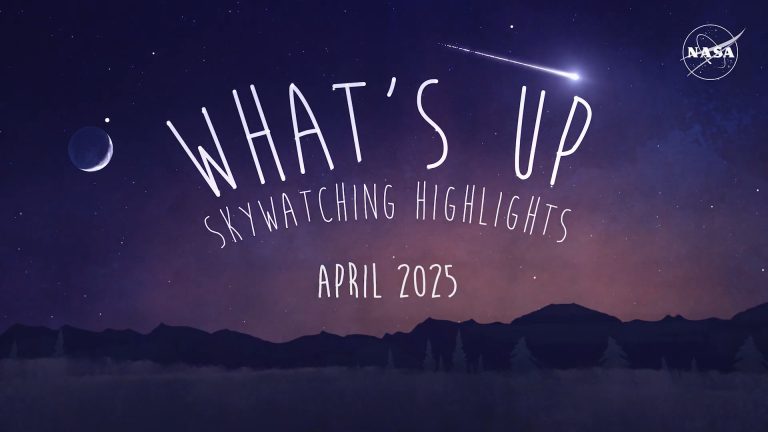2020 June 3
The Dance of Venus and Earth
Video & Text Credit: James O’Donoghue (JAXA); Data: NASA, HORIZONS; h/t: Josef Chlachula
Explanation: Every time Venus passes the Earth, it shows the same face. This remarkable fact has been known for only about 50 years, ever since radio telescopes have been able to peer beneath Venus’ thick clouds and track its slowly rotating surface. This inferior conjunction — when Venus and Earth are the closest — occurs today. The featured animation shows the positions of the Sun, Venus and Earth between 2010-2023 based on NASA-downloaded data, while a mock yellow ‘arm’ has been fixed to the ground on Venus to indicate rotation. The reason for this unusual 1.6-year resonance is the gravitational influence that Earth has on Venus, which surprisingly dominates the Sun’s tidal effect. If Venus could be seen through the Sun’s glare today, it would show just a very slight sliver of a crescent. Although previously visible in the evening sky, starting tomorrow, Venus will appear in the morning sky — on the other side of the Sun as viewed from Earth.
Experts Debate: How will humanity first discover extraterrestrial life?
Tomorrow’s picture: open space
金星与地球的回旋之舞
影片及文稿提供: James O’Donoghue(JAXA); Data: NASA, HORIZONS; h/t: Josef Chlachula
说明: 每次通过地球前方时,金星都是以同一面向着地球。自从使用能穿过金星厚重云层的电波望远镜,追踪金星缓缓转动的表面以来,人类知道这个事实已有50多年。而这个金星最接近地球的下合位置,就出现在今天。这部建构自可自行下载的美国航太总署数据的主题动画,呈现在2010-2023年间期,太阳、金星和地球的相对位置。其中,固定在金星表面的虚构黄臂,用于标示金星的自转。这个不寻常的1.6年共振周期,起因于地球对金星的重力扰动,出乎意料的远大于太阳的潮汐效应。在今天,如果我们能见到隐在太阳眩光里的金星,它的样貌会是极为纤细的一抹银白蛾眉。从地球看出去,先前的金星是夜空中的昏星,不过从明天起,金星会移到太阳的另一侧,成为清晨东方天空中的晨星。(inferior conjunction下合)
专家辩论:人类将如何首次发现外星生命?
明日的图片: open space







Space, the final frontier, these are the voyages of the starship enterprise, her five-year mission, to explore strange new worlds, to seek out new life and new civilizations, to boldly go where no man has gone before.